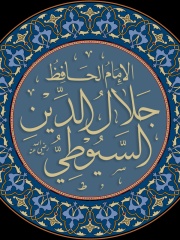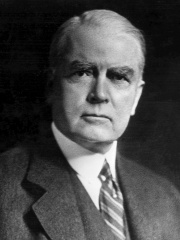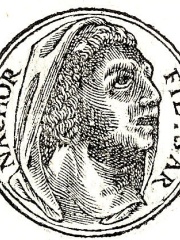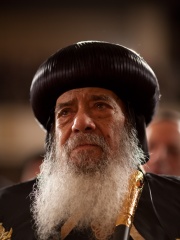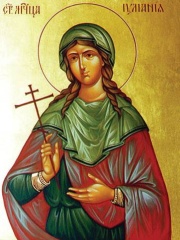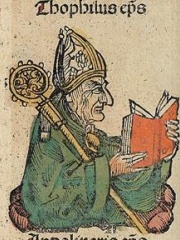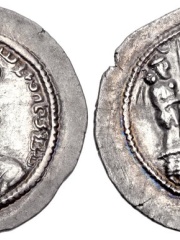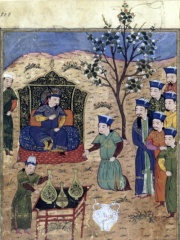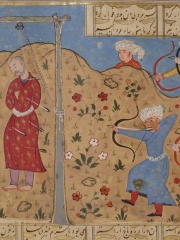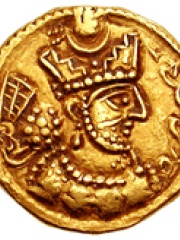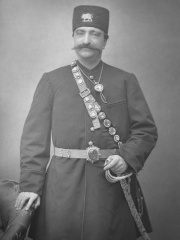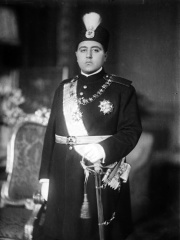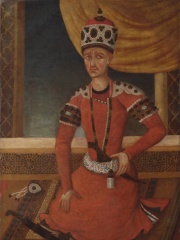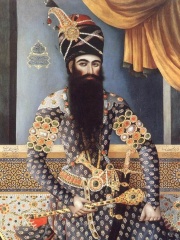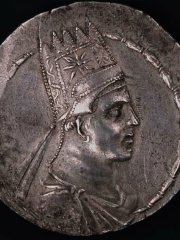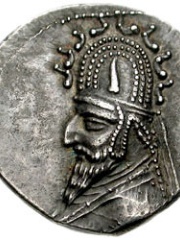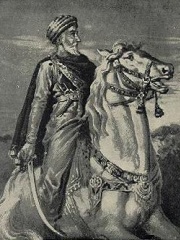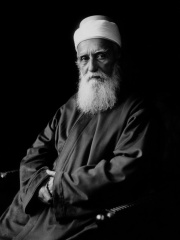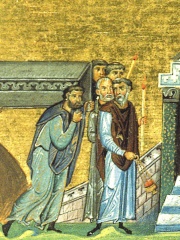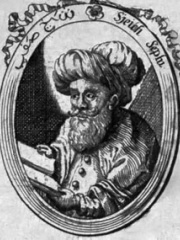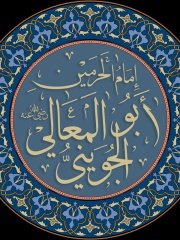RELIGIOUS FIGURE
Mordecai

 Mordecai
Mordecai
Mordecai (; also Mordechai; Hebrew: מָרְדֳּכַי, Modern: Mŏrdoḵay, Tiberian: Mārdoḵay, IPA: [moʁdeˈχaj]) is one of the main personalities in the Book of Esther in the Hebrew Bible. He is the cousin and guardian of Esther, who became queen of Persia under the reign of Ahasuerus (Xerxes I). Mordecai's loyalty and bravery are highlighted in the story as he helps Esther foil the plot of Haman, the king's vizier, to exterminate the Jewish people. His story is celebrated in the Jewish holiday of Purim, which commemorates his victory. Read more on Wikipedia
His biography is available in 33 different languages on Wikipedia (up from 32 in 2024). Mordecai is the 739th most popular religious figure (down from 689th in 2024), the 97th most popular biography from Iran (up from 99th in 2019) and the 11th most popular Iranian Religious Figure.
Mordecai is most famous for his involvement in the Purim story. Mordecai is a Jew who saves the Jews of Persia from extermination by Haman, a powerful member of the Persian court.
Memorability Metrics
Page views of Mordecai by language
Among RELIGIOUS FIGURES
Among religious figures, Mordecai ranks 739 out of 3,187. Before him are Obadiah, Al-Suyuti, Robert of Molesme, John Mott, Nahor, son of Serug, and Benkei. After him are Saint Remigius, Olaus Magnus, Matteo Zuppi, Pope Shenouda III of Alexandria, Juliana of Nicomedia, and Theophilus of Antioch.
Most Popular Religious Figures in Wikipedia
Go to all RankingsObadiah
587 BC - 500 BC
HPI: 70.24
Rank: 733
Al-Suyuti
1445 - 1505
HPI: 70.22
Rank: 734
Robert of Molesme
1024 - 1111
HPI: 70.19
Rank: 735
John Mott
1865 - 1955
HPI: 70.17
Rank: 736
Nahor, son of Serug
1912 BC - 1764 BC
HPI: 70.15
Rank: 737
Benkei
1155 - 1189
HPI: 70.14
Rank: 738
Mordecai
HPI: 70.14
Rank: 739
Saint Remigius
437 - 533
HPI: 70.12
Rank: 740
Olaus Magnus
1490 - 1557
HPI: 70.10
Rank: 741
Matteo Zuppi
1955 - Present
HPI: 70.05
Rank: 742
Pope Shenouda III of Alexandria
1923 - 2012
HPI: 70.03
Rank: 743
Juliana of Nicomedia
285 - 304
HPI: 70.03
Rank: 744
Theophilus of Antioch
140 - 183
HPI: 69.99
Rank: 745
In Iran
Among people born in Iran, Mordecai ranks 97 out of 631. Before him are Yazdegerd I (400), Gaykhatu (1300), Mazdak (450), Ali al-Sistani (1930), Bahram V (406), and Naser al-Din Shah Qajar (1831). After him are Ahmad Shah Qajar (1898), Agha Mohammad Khan Qajar (1742), Fath-Ali Shah Qajar (1772), Artavasdes II of Armenia (-100), Sinatruces of Parthia (-157), and Safi of Persia (1611).
Others born in Iran
Go to all RankingsYazdegerd I
POLITICIAN
400 - 421
HPI: 70.40
Rank: 91
Gaykhatu
POLITICIAN
1300 - 1295
HPI: 70.32
Rank: 92
Mazdak
PHILOSOPHER
450 - 529
HPI: 70.30
Rank: 93
Ali al-Sistani
POLITICIAN
1930 - Present
HPI: 70.22
Rank: 94
Bahram V
POLITICIAN
406 - 438
HPI: 70.21
Rank: 95
Naser al-Din Shah Qajar
POLITICIAN
1831 - 1896
HPI: 70.18
Rank: 96
Mordecai
RELIGIOUS FIGURE
HPI: 70.14
Rank: 97
Ahmad Shah Qajar
POLITICIAN
1898 - 1930
HPI: 69.82
Rank: 98
Agha Mohammad Khan Qajar
POLITICIAN
1742 - 1797
HPI: 69.77
Rank: 99
Fath-Ali Shah Qajar
POLITICIAN
1772 - 1834
HPI: 69.62
Rank: 100
Artavasdes II of Armenia
POLITICIAN
100 BC - 31 BC
HPI: 69.54
Rank: 101
Sinatruces of Parthia
POLITICIAN
157 BC - 70 BC
HPI: 69.54
Rank: 102
Safi of Persia
POLITICIAN
1611 - 1642
HPI: 69.53
Rank: 103
Among RELIGIOUS FIGURES In Iran
Among religious figures born in Iran, Mordecai ranks 11. Before him are Abdul Qadir Gilani (1078), Hassan-i Sabbah (1050), Muslim ibn al-Hajjaj (817), Báb (1819), Ibn Majah (824), and `Abdu'l-Bahá (1844). After him are Sasan (200), Anastasius of Persia (550), Hamza ibn-'Ali ibn-Ahmad (985), Safi-ad-din Ardabili (1252), Al-Juwayni (1028), and Al-Bayhaqi (994).
Abdul Qadir Gilani
1078 - 1166
HPI: 79.64
Rank: 5
Hassan-i Sabbah
1050 - 1124
HPI: 79.08
Rank: 6
Muslim ibn al-Hajjaj
817 - 875
HPI: 76.60
Rank: 7
Báb
1819 - 1850
HPI: 73.80
Rank: 8
Ibn Majah
824 - 886
HPI: 72.73
Rank: 9
`Abdu'l-Bahá
1844 - 1921
HPI: 71.89
Rank: 10
Mordecai
HPI: 70.14
Rank: 11
Sasan
200 - 300
HPI: 67.65
Rank: 12
Anastasius of Persia
550 - 628
HPI: 67.53
Rank: 13
Hamza ibn-'Ali ibn-Ahmad
985 - 1021
HPI: 67.33
Rank: 14
Safi-ad-din Ardabili
1252 - 1334
HPI: 67.23
Rank: 15
Al-Juwayni
1028 - 1085
HPI: 66.61
Rank: 16
Al-Bayhaqi
994 - 1066
HPI: 66.07
Rank: 17

